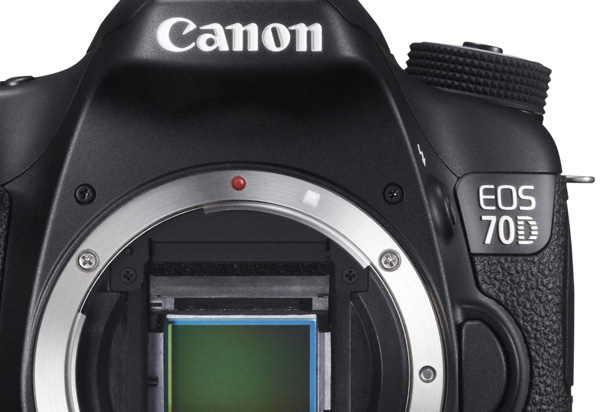Nikon D7200 vs Canon EOS 70D: enthusiast DSLRs go head to head

Nikon's new D7200 camera has hit the market, and with it, throws up the age old question: which is better, Canon or Nikon? In our Nikon D7200 vs Canon EOS 70D comparison we look at how these two rival cameras stack up.

Nikon's new camera is an enthusiast model, and perhaps most closely competes with the Canon EOS 70D, which is also aimed at the enthusiast market.
Canon has another camera in this sector too, the Canon EOS 7D Mark II, while Nikon hasn't (yet!) upgraded its D300, which used to sit at the top end of its APS-C format range.
SEE MORE: Canon EOS 7D Mark II vs EOS-1D X vs Nikon D4s vs Samsung NX1
While it is fairly tempting to also include the 7D Mark II in a comparison, it is also a much more expensive camera than either the D7200 and the 70D at most places.
Instead, in this piece, we'll take a look at some of the key differences and similarities between the Nikon D7200 and Canon 70D, to help you decide which one gets your investment.
SEE MORE: Nikon D7200 vs D7100 - 8 key differences you need to know
Sign up for breaking news, reviews, opinion, top tech deals, and more.
Nikon D7200 vs Canon EOS 70D: sensors

Both of the cameras have APS-C sized sensors (also known as DX format in Nikon parlance). But it's the Nikon which wins out in terms of resolution, with 24.2 million pixels beating the Canon 70D's 20.2 million pixels. Not only that, but the Nikon D7200 has no anti-aliasing filter, which should make it better able to resolve detail than its Canon rival.
SEE MORE: Nikon Cameras - the full and complete range explained
Nikon D7200 vs Canon EOS 70D: processors

Nikon has equipped the Nikon D7200 with its latest processing engine, the Expeed 4. This should make it better able to cope with functions such as image processing at high ISO values, and overall processing speeds when compared with its predecessor, the D7100. By comparison, the Canon EOS 70D has a Digic 5+ processor, which is not the company's latest, but still a good performer never-the-less.
SEE MORE: Nikon D810 vs Canon EOS 5D Mark III - full-frame DSLRs go head to head
Nikon D7200 vs Canon EOS 70D: viewfinders and screens
While the Nikon D7200 has the same optical viewfinder as its predecessor, it stands a little apart from the Canon 70D as it offers a 100% coverage, compared with the Canon which only offers 98%. In practical terms, you may not notice much difference, but for ultra precise framing, the 70D may allow for some distracting elements to creep into the frame.
On the other hand, the Canon 70D wins out in the battle of the screens. Although it has a slightly lower resolution (1,040,000 dots vs the D7200's 1,229,000), it is both articulating and touch sensitive, making it more usable in a variety of different situations, including awkward shooting angles and video shooting.
SEE MORE: Canon EOS 5DS and 5DS R vs Nikon D810
Nikon D7200 vs Canon EOS 70D: autofocus
The Nikon D7200's autofocusing system is inherited from full-frame cameras which are higher up in the range than the enthusiast model. The Multi-CAM 3500 II module is capable of working down to -3EV and has 51 points which are centred around the middle of the frame, with 15 of them being the more sensitive cross type.
By contrast, the Canon 70D only has 19 autofocus points, but on the plus side, all 19 of those are cross type. It also uses Canon's Dual Pixel CMOS AF technology, which makes it quicker to focus when shooting video and using Live View.
SEE MORE: Nikon D810 vs Canon EOS 5D Mark III - full-frame DSLRs go head to head
Nikon D7200 vs Canon EOS 70D: sensitivity
One of the benefits of the advanced processing engines that both of these cameras have is that they can shoot at high ISOs. The Nikon D7200 is capable of shooting at ISO 100 - 25600 at its native range, with a very impressive high expansion setting of ISO 102,400 (equivalent). Meanwhile, the 70D is not quite so capable, with ISO 100 - 12800 as its native range, and an expansion setting of ISO 25600.

Amy has been writing about cameras, photography and associated tech since 2009. Amy was once part of the photography testing team for Future Publishing working across TechRadar, Digital Camera, PhotoPlus, N Photo and Photography Week. For her photography, she has won awards and has been exhibited. She often partakes in unusual projects - including one intense year where she used a different camera every single day. Amy is currently the Features Editor at Amateur Photographer magazine, and in her increasingly little spare time works across a number of high-profile publications including Wired, Stuff, Digital Camera World, Expert Reviews, and just a little off-tangent, PetsRadar.